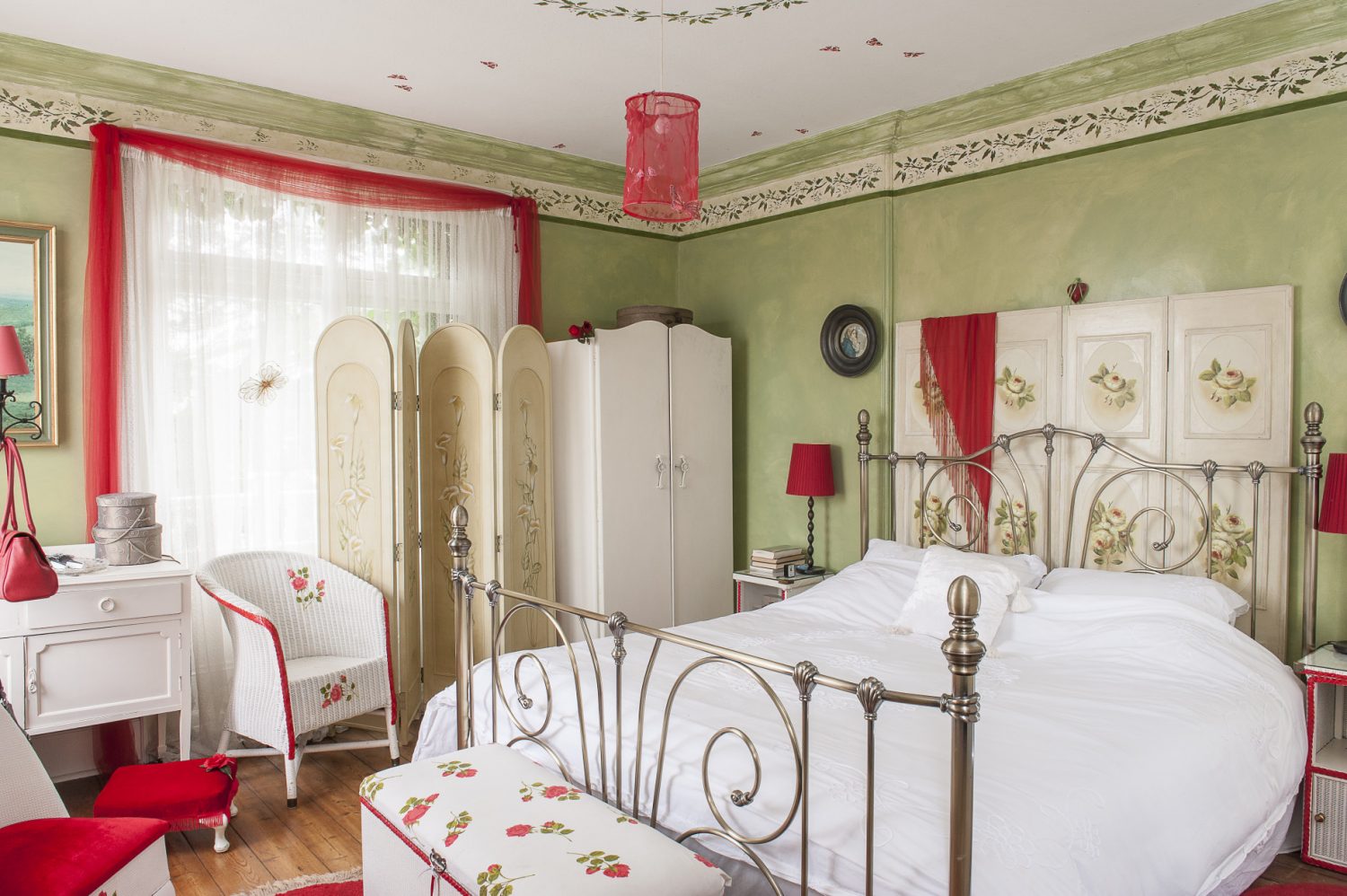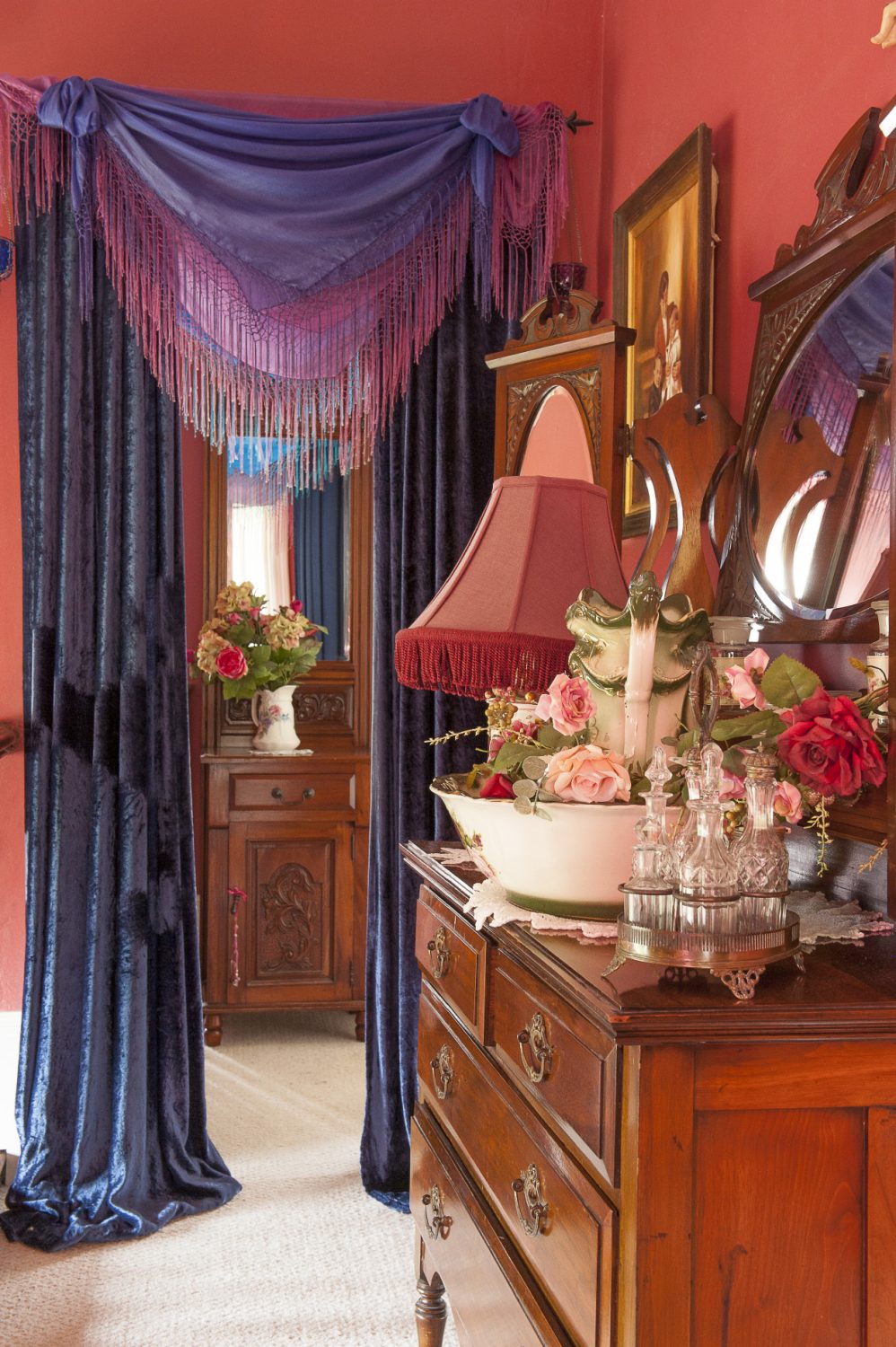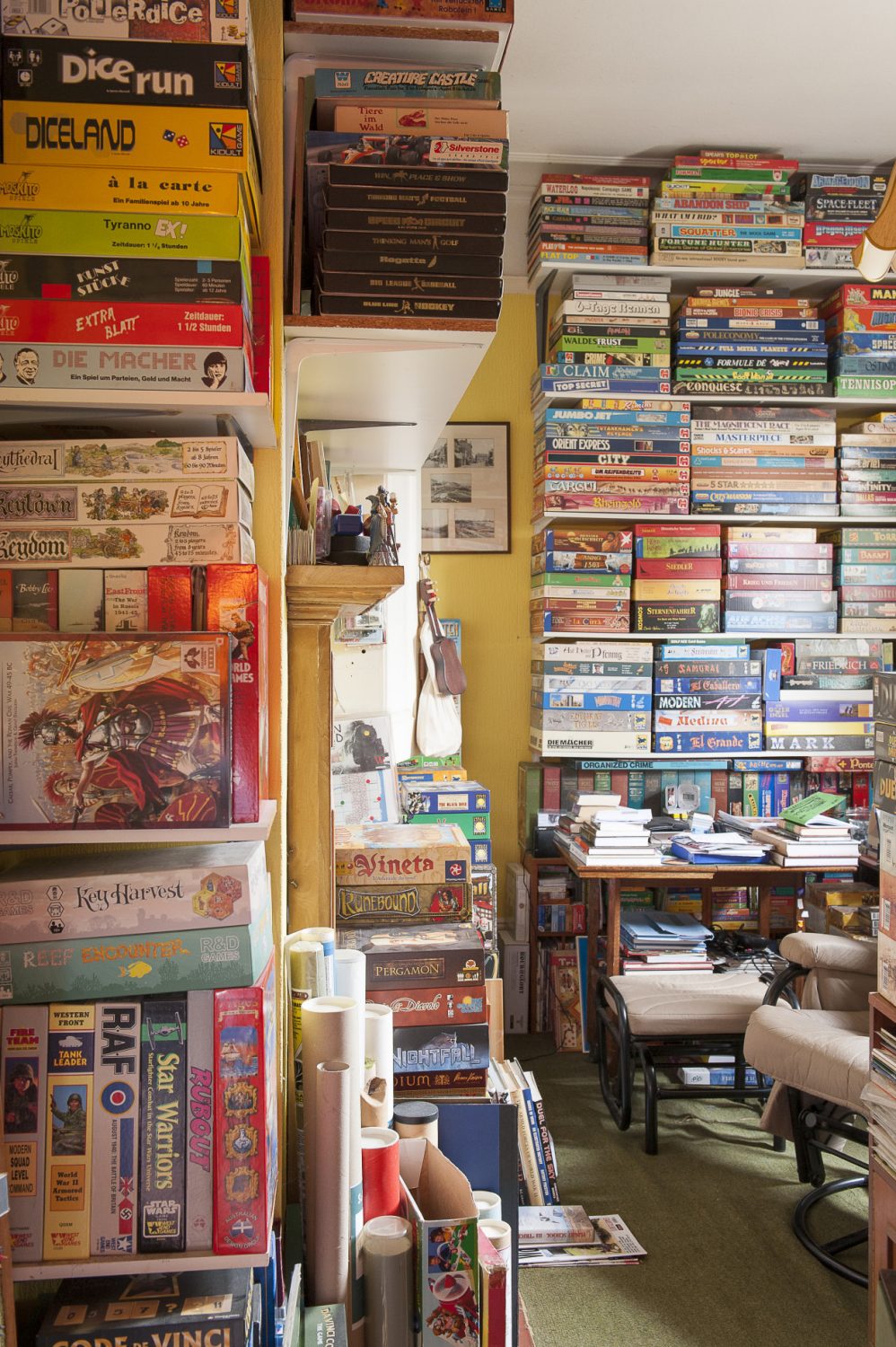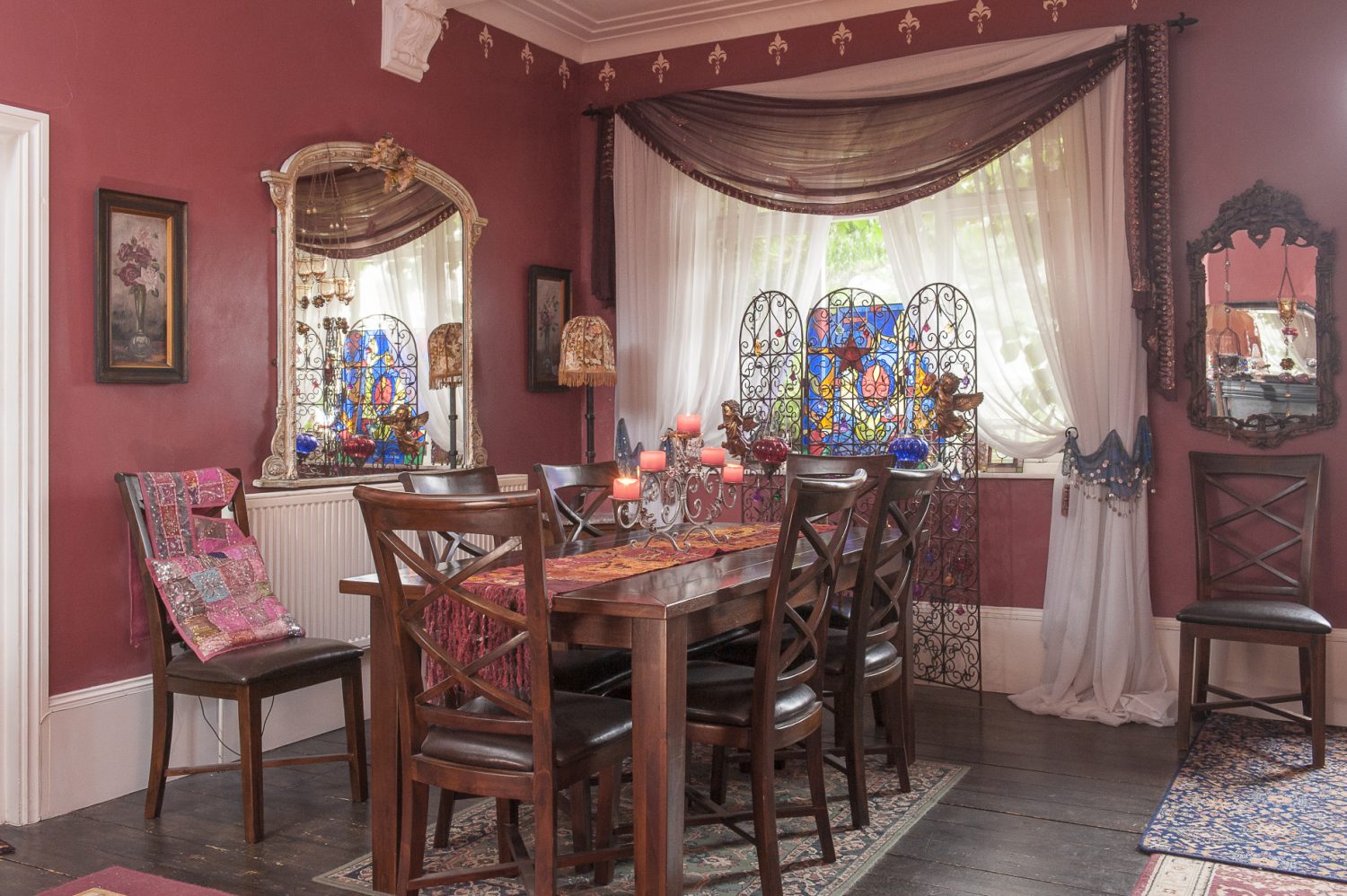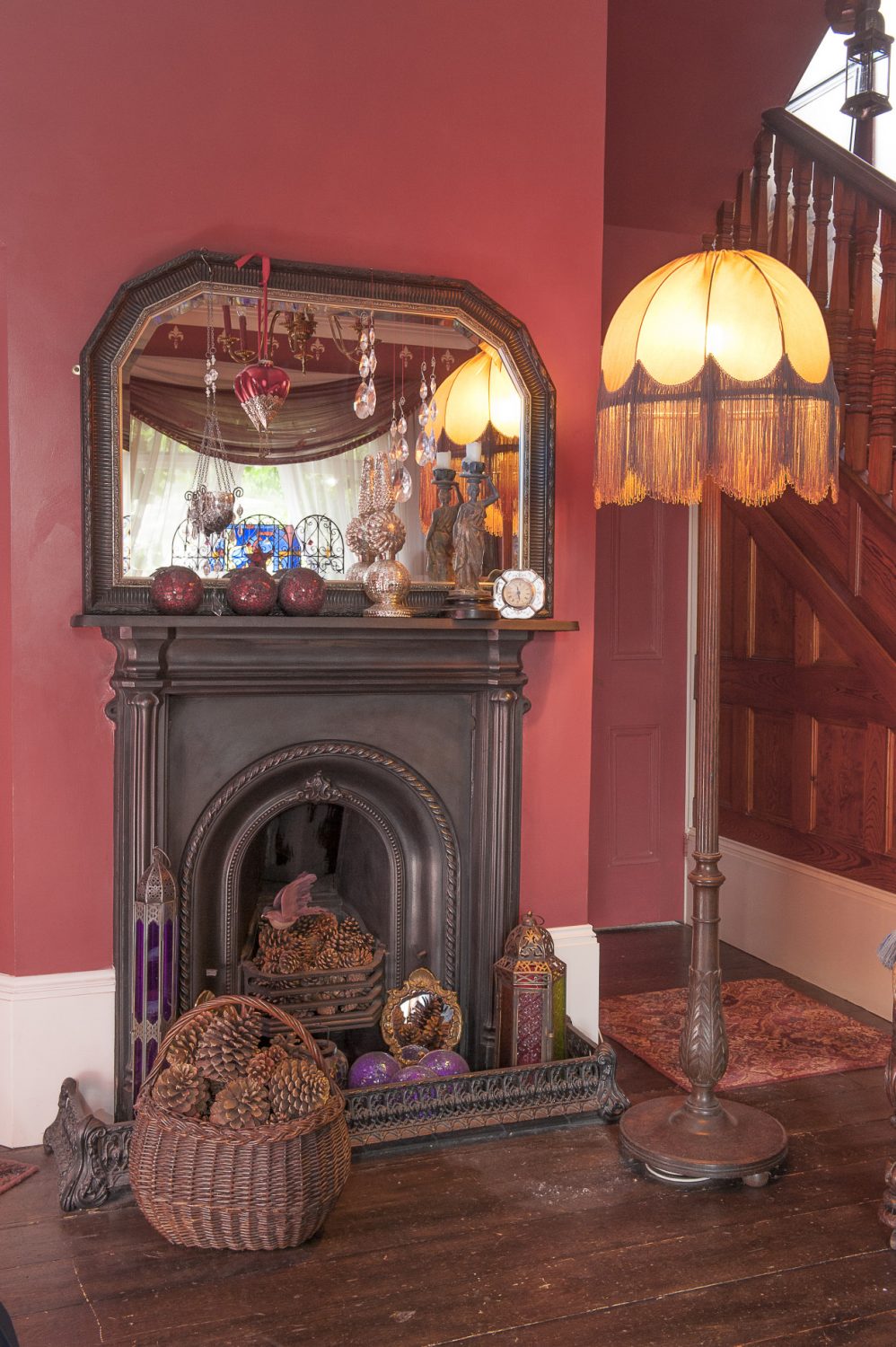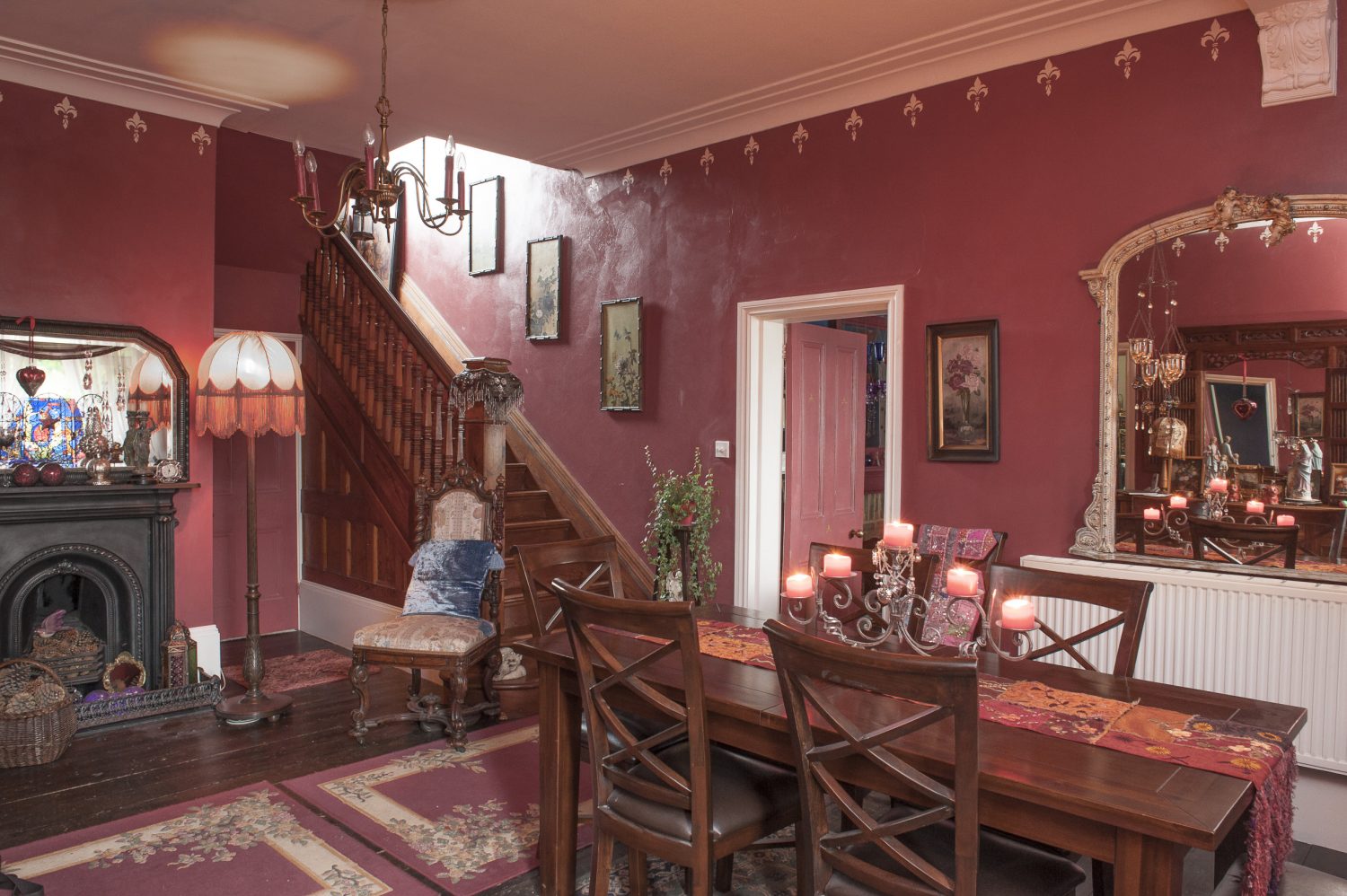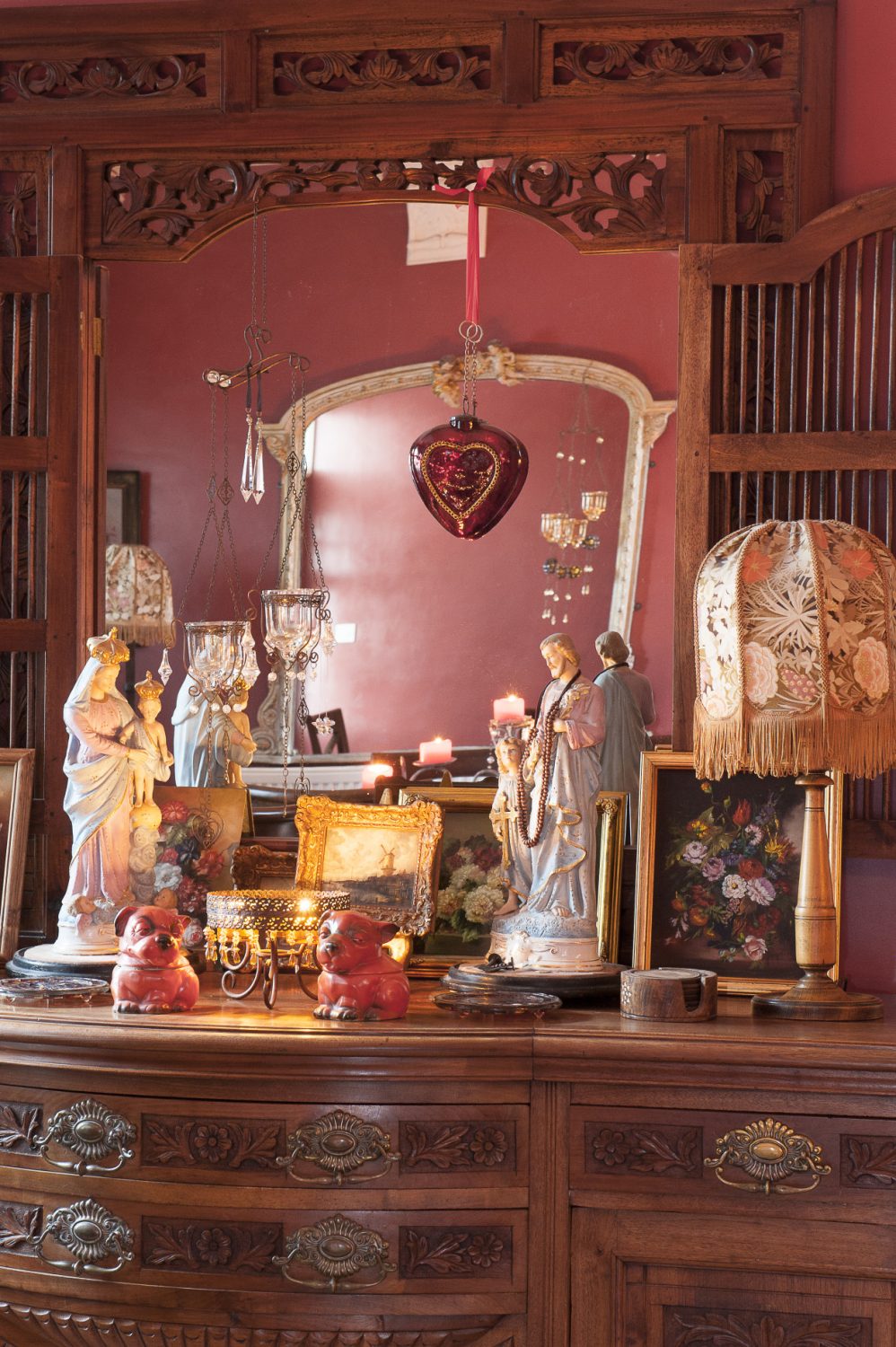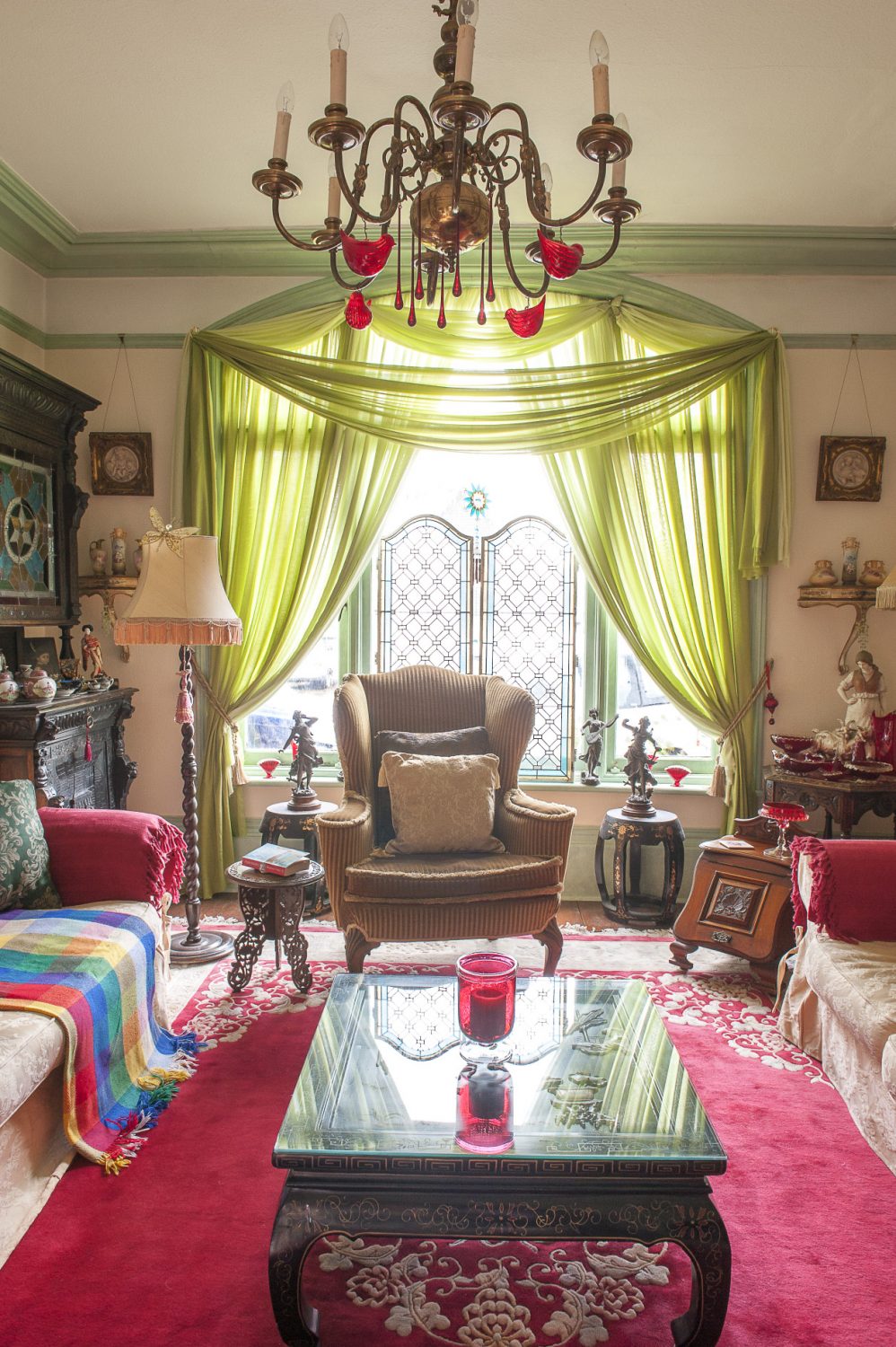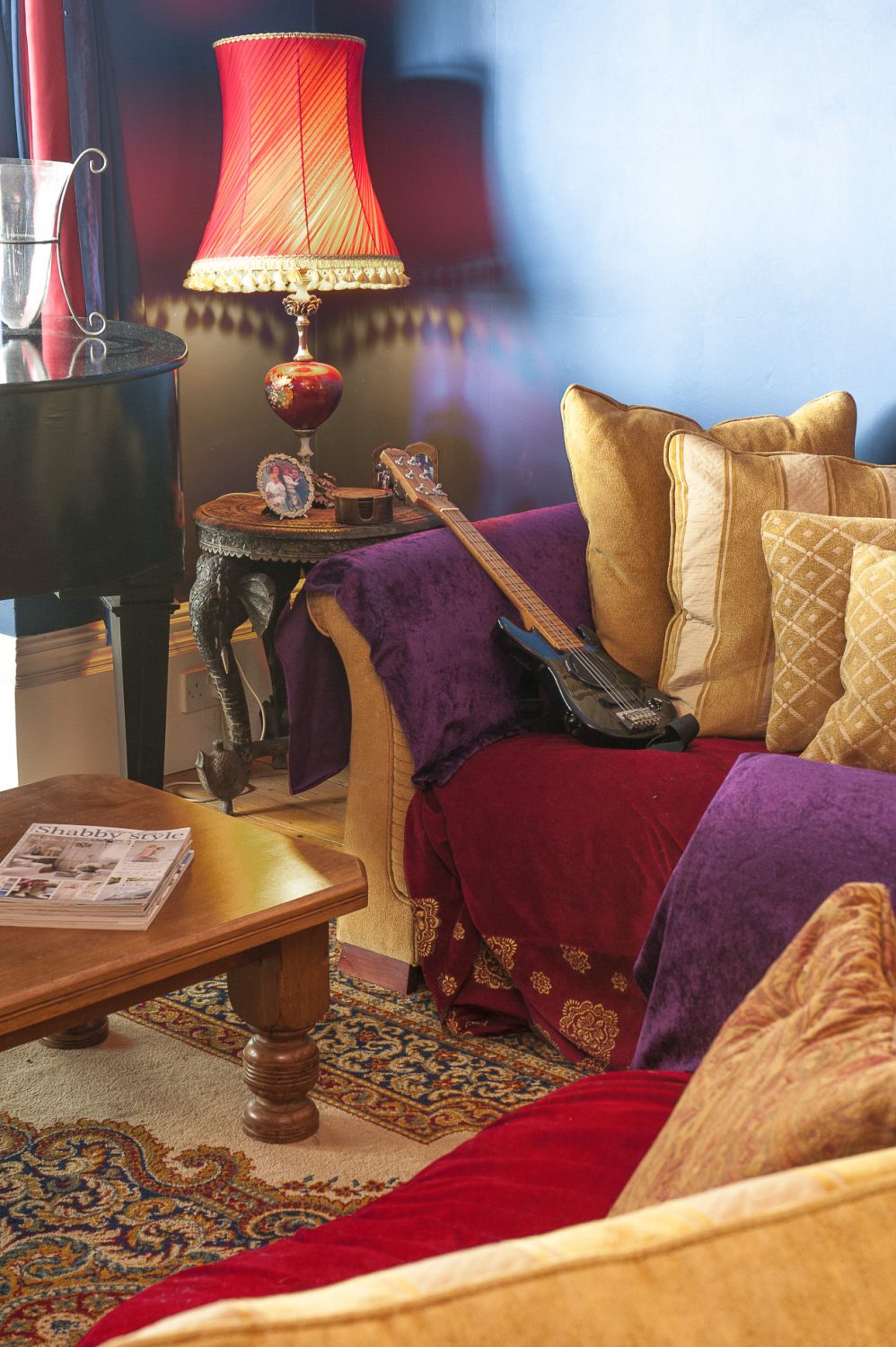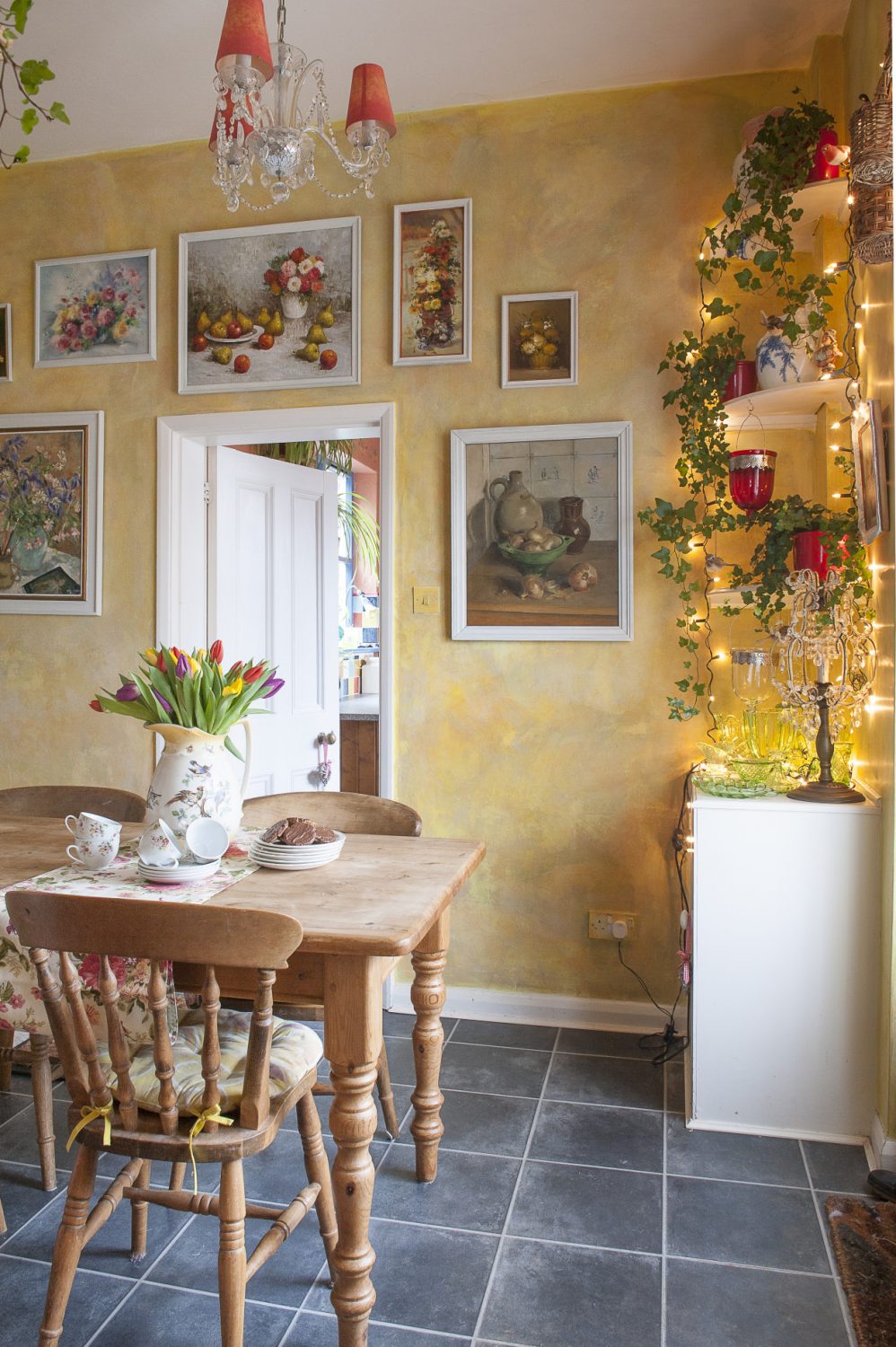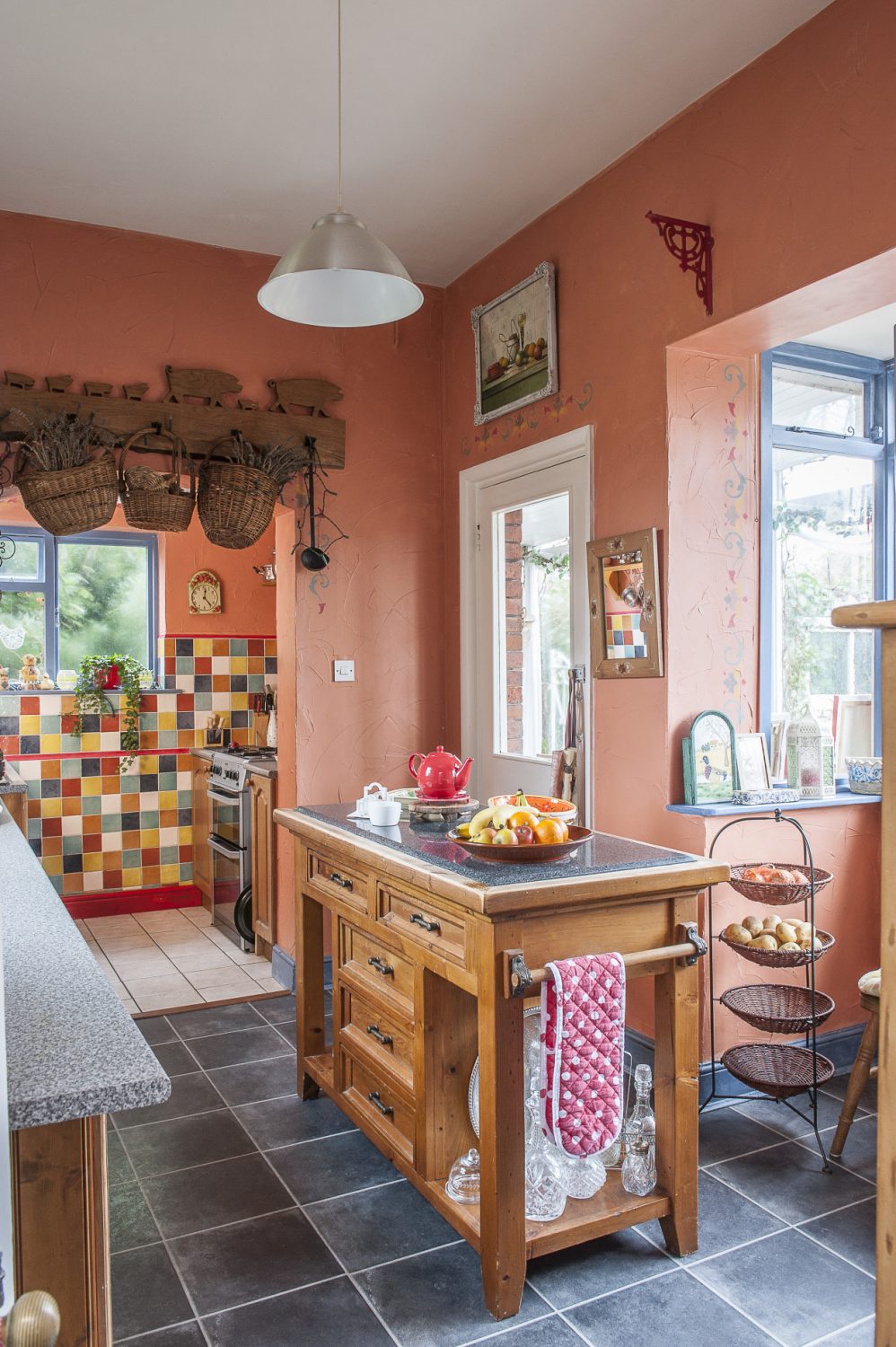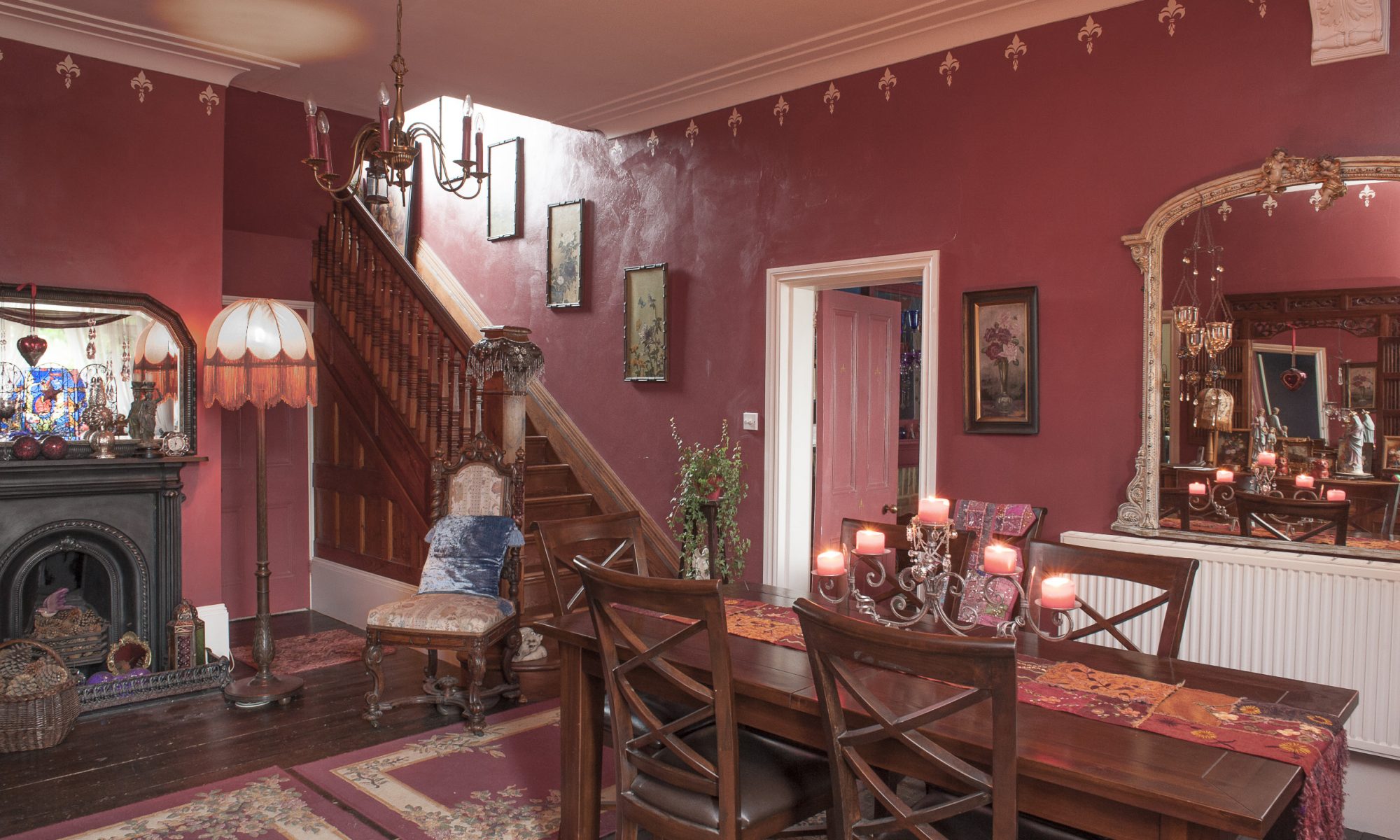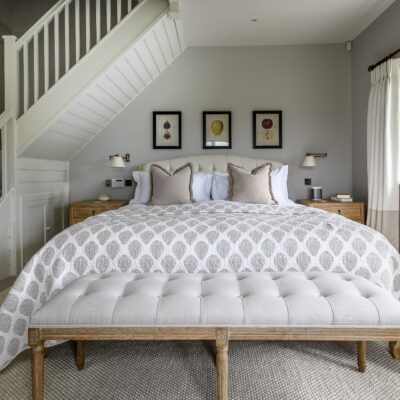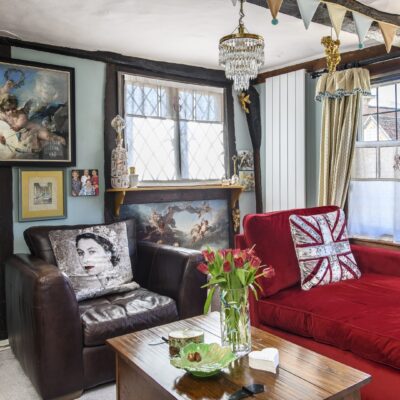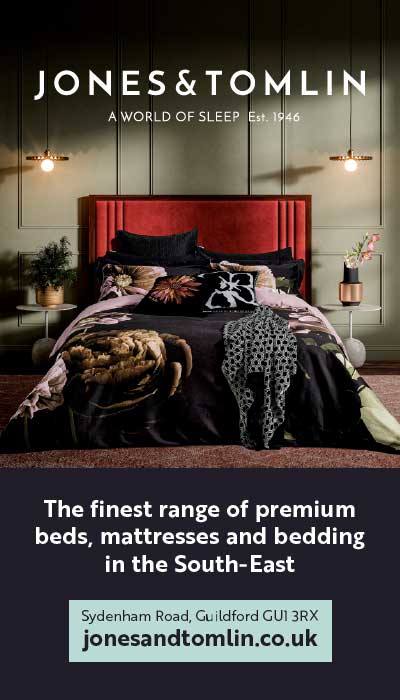Carmel and Mick have transformed their seaside home into a flamboyant and creative space perfect for their family to pursue their musical talents. Bexhill-on-Sea is better known for bungalows than for period houses – even the seafront boasts a long, low-rise modernist building in the shape of the iconic De la Warr Pavilion. So finding a large period property turned out to be a task and a half for Carmel and Mick when they decided to up-sticks with their four children fifteen years ago and move out of London.
“The price differences between here and London were amazing, but it was so hard to find the right property,” says Carmel. “My brother James already lived down here and we knew we wanted to be in the area, but it was difficult trekking down to view properties and negotiating from town.” Luckily, their ‘man in the field’, brother James was on hand to scout out properties for them and managed to find the house before it got onto the market. By this time the couple were exhausted and had had enough of traipsing up and down from London. Mick was stressed out enough to say to James on the phone, “That’s it. Just offer them the money.” They bought the house without even viewing it.
‘Imposing’ might be what the particulars would have said of this handsome, double fronted Victorian property, had the estate agent got that far. Standing proud amid a sea of indistinct and decidedly humdrum houses, it has (like so many of the best Victorians) a robust presence and character. “We know it was built in 1890,” says Mick, “because we looked under some of the floorboards that had to be lifted upstairs and they had the date printed on the undersides.”
When the couple bought the house it had been divided into two separate dwellings by the previous owner, in order to make room for his mother-in-law. The split had happened in the sixties, the age of clean lines and the ‘great Victorian cover up’, when anything ornate and especially, it seems, anything Victorian, was removed or clad in plywood. “Luckily we had a fantastic builder who had really good ideas,” says Carmel, but even then it was hard to work out how to reinstate the original house. The sixties conversion had been a botched job – to the extent that the ceiling in the hall nearly collapsed at one stage during the reinstatement. In fact, in the time it took to go and buy the acro to prop the ceiling up, it had sagged and the floor above was in danger of falling into the hall.
The impressive central staircase is original but was masked by plywood and to Mick and Carmel’s delight, once they’d ripped off the cladding was found to be nearly intact. The difference in London and Bexhill prices was highlighted again when they were quoted a huge amount to replicate the few missing spindles from the staircase by a company in London, but found a lovely local carpenter who charged a tenth of the price.
And then there was Derek, a wonderful local gardener, who came with his digger one day and transformed the whole garden; digging up a huge conifer tree, burying a large shed, landscaping and re-seeding it all, giving the family a whole new garden for next to no money at all. “Reputation is key with local tradesmen,” says Carmel. So all the workmen were good? “Actually the plumbers were dreadful,” she says. “They put radiators on the walls with the wrong fittings. Mick called for me to come home quickly one day – a radiator had fallen off the wall and the man was lying at the bottom of the stairs with his finger in the pipe!”
Deciding which side of the house to locate the kitchen was a conundrum and for some time before the house was integrated back into one, the family had to run from one house to the other in their pyjamas. But starting off with two houses hasn’t all been problematic; they’ve kept one of the sixties staircases and with a large family, it’s been handy to have two downstairs cloakrooms and two family bathrooms.
It’s a dauntingly big house to decorate, with high ceilings and vast stretches of walls – originally covered with acres of woodchip that had to be painstakingly peeled off. “We thought it would take nine months to overhaul the house, but it took nine years,” Carmel laughs. Undaunted and optimistic, this couple don’t seem fazed by much at all. While they were in London all the children were home schooled. The eldest, Frances, decided to start school when they arrived in Bexhill, and was followed in turn by younger siblings Alexandra and Rory.
When it was time for Dan, the youngest of the four, to think about going, the others put him off and he decided not to go at all, even though Frances went on to be Head Girl at the school. Dan is now a talented and sought-after drummer, playing in several local bands. Brother and sister team Frances and Rory run Little Vintage Baby from their shop located under the De La Warr Pavilion on the sea front. Little Vintage Baby specialises in gorgeous vintage inspired babywear, shabby chic painted furniture, home accessories and decorations.
Mick, who was a professional bass guitarist, is now semi retired. He works part time for a housing charity with daughter Alexandra, as well as retaining an interest in his writing and music. He also buys and sells sports cars. “My father had been in banking all his life and told me not to waste my life doing something I didn’t enjoy,” he says. Working from home has meant that he’s been able to be a hands-on dad taking the children to sport, dancing, music and drama. This has freed up Carmel’s time and allowed her to apply herself to the décor of the house. Mick is happy to let her have free rein. “It’s all down to Carme, all her inspiration,” he says. “I have few needs in that area, as long as there’s time for music.” One of the upstairs rooms is a dedicated music room where the various bands that the family are part of (all the children are musical) come to practise. What do the neighbours say? I wonder. “We hear it more than the neighbours, I think,” laughs Mick, “unlike us, they’re all double glazed.”
The physical labour of decorating the house may have been huge, but Carmel has achieved a striking transformation, boldly using paint effects and richly flamboyant touches in every room. “People are talked out of a style,” she says. “You’ve got to be brave, express yourself – and paint is the cheapest option for changing the style of things. We all need an outlet for our creativity and it can lead to problems if you can’t express yourself.” Carmel has stencilled, stippled and rag-rolled her way around the house with style, confidence and a joyous sense of colour.
There are Oriental and Moroccan influences, the rich tones highlighted by glowing Venetian glass and objects found on their travels. The effect is vibrant and sumptuous, bringing warmth and intimacy to a house that could easily feel overwhelming, chilly and impersonal. Carmel’s sense of fun is evident too. There’s the yellow breakfast room covered in still life pictures and cascades of ivy, ensuring that mornings will be sun-filled whatever the weather, and one of the rooms has a decidedly circus feel to it. “I go out to friends’ houses and when I come back I just want to paint everything cream,” she jokes, as I marvel at the vibrant creativity all around us.
Walking into Mick’s study I feel I’ve slipped into a library from another dimension – piles of games are stacked as neatly and precisely as books. “It’s not a collection,” he insists, “more a lifetime’s accumulation. I’m from the era when that’s what people did in their spare time – before there was much television, before computer games, the Internet and mobile phones, we played board games.” And it would appear that there is still a lot of interest in games, although most of these are a far cry from Monopoly.
“Gaming is really big in Germany,” says Mick – and looking more closely I can see that many of the titles on the boxes have Gothic typefaces. The best (he names games like Settlers of Catan or Carcassonne) succeed, Mick thinks, because they’re based on collaboration, on wheeling and dealing, rather than the annihilation of your opponents, which might strike a reparative chord in Germany – apparently the German rules of the game Risk (a territorial war game) had to be amended so that players could not just take territories, but liberate them too.
Liberation is the overwhelming sense that I take away with me from this marvellously unrestrained and colourful home. Warmth and energy flow through the fabric of the house with the same exuberance expressed in the family’s music. I feel an urge to turn up the volume in my own life – and buy a great big tin of red paint.
TEST
Mick and Carmel’s room is a bright and airy retreat. Accents of olive green and red, combined with Carmel’s stencils, work together to create a rather Mediterranean feel
TEST
Upstairs, tasseled scarves and velvet curtains veil the entrance to the master bedroom
TEST
The dining room fireplace is surrounded by oriental and Moroccan influences, the rich tones highlighted by glowing Venetian glass
TEST
Carmel and Mick have transformed their seaside home into a flamboyant and creative space perfect for their family to pursue their musical talents
TEST
In the dining room the surface of an ornate cabinet is filled with miniature paintings in gilded frames and objects from the couple’s travels
TEST
A window is generously swathed with metres of rich green fabric in the more formal of the two drawing rooms
TEST
The family’s passion for music is evident in the family drawing room where Carmel has painted the walls and ceiling to create a tent-like effect, not dissimilar to a circus’s big top
TEST
The kitchen is painted and tiled in a Spanish palette of rich terracotta and sunshine yellow
